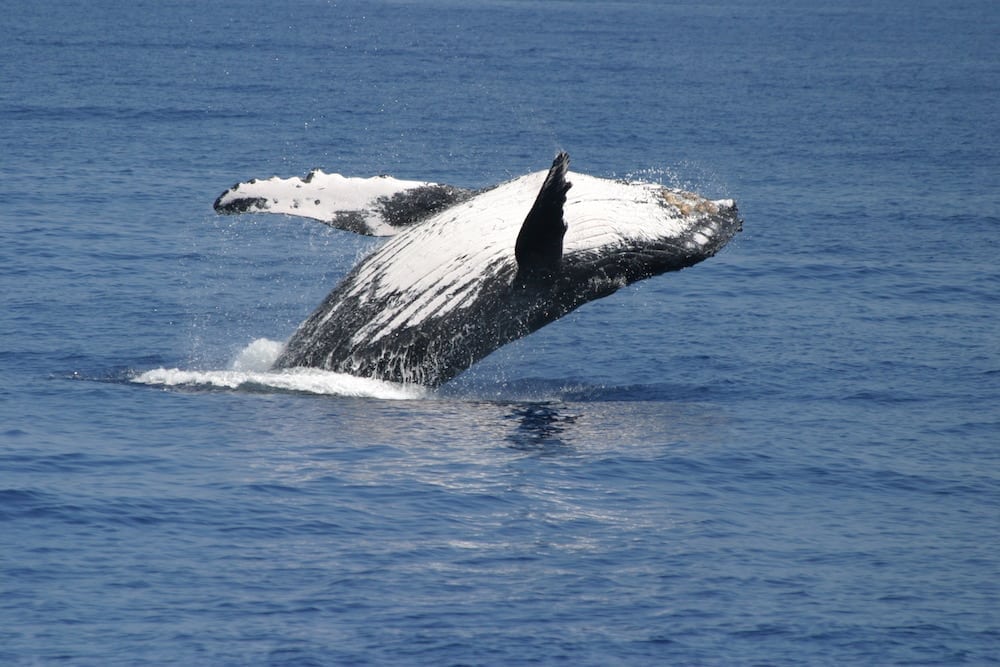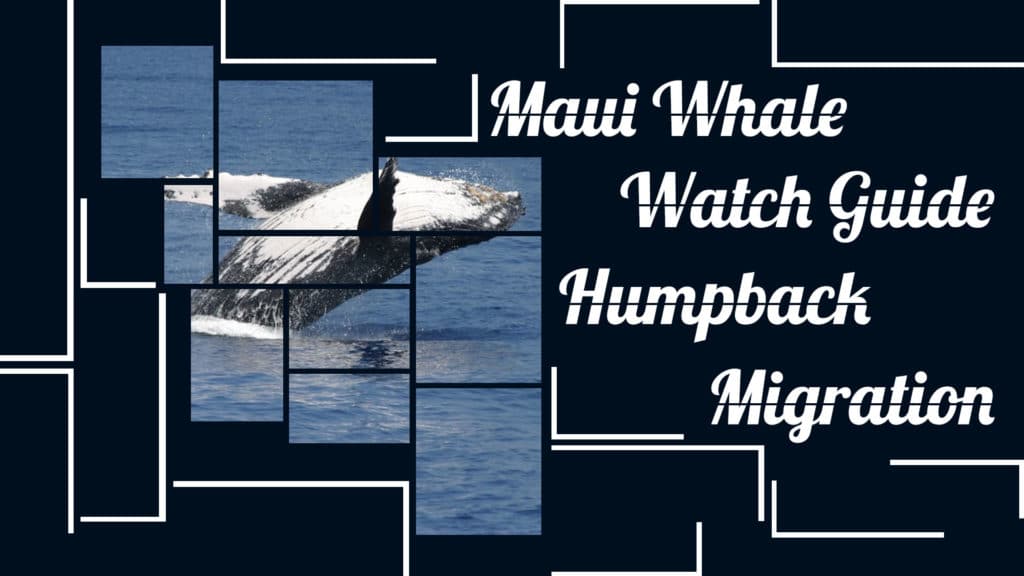Saying Aloha to the Whales
It's that sad time of year when the North Pacific Humpback Whales depart Hawaii. At the time of this writing, the whales are still abundant, but we ...

Every winter, the thousands of humpback whales that migrate to Hawaii are a source of wonder and interest among both island visitors and residents. For those who keep an eye on the blue horizon, the whales can put on quite a show with their acrobatic antics. Their great size and charismatic behavior are just a couple of reasons why our Maui whale watch tours are so popular. Although there are still some mysteries remaining as to the lives they lead below the waves, scientists have discovered many fascinating things about our humpback neighbors.
Humpbacks are found throughout the world's oceans, although their numbers dipped dangerously low as a result of the whaling that started in the 1800's. It's estimated that as few as 1,000 were left in 1965. Now, there are an estimated 23,000 north pacific humpbacks alone. Of this number, about 60%, or 12,000 - 14,000, migrate to Hawaii.
An interesting fact about the north pacific humpbacks are the three somewhat distinct populations they form. The eastern stock migrate between Northern California in summer and Mexico in winter. The western stock summers in the Aleutian Islands and moves on to the islands south of Japan in winter. The central stock can be found here in Hawaii in the winter after spending their summers in southeast Alaska and the Gulf of Alaska. The whales aren't too strict about their migrations though, as some mixing on the breeding grounds has been observed in each of the three groups, which probably goes a long way to keeping the gene pool nice and diverse.
Hawaii's waters provide such an important habitat for these whales that Congress designated the Hawaiian Islands Humpback Whale National Marine Sanctuary in 1992, where the whales would be protected as an endangered species by both federal and state law. Luckily for us, one of the two most popular places for whales to congregate is in the waters of Maui County, meaning the area between Maui, Lanai, Molokai and Kaho'olawe. The other popular spot for the whales is to the southwest of Molokai. As their numbers continue to strengthen, they have made progress spreading out toward the other Hawaiian islands.

Our whales from Alaska leave their feeding grounds in the fall and swim almost non-stop until reaching their breeding grounds in Hawaii, which can take between 6-8 weeks. At about 3,000 miles each way, it's one of the longest mammal migrations, which is why it takes them so long despite their epic size.
Marine scientists have made some interesting discoveries about Hawaii's arriving whales. Namely, who arrives when. Nursing mothers arrive around mid-November, generally being the first on the scene. The next to arrive are juveniles and newly weaned yearlings, followed by a surge of adult males and females. The last to arrive are pregnant females, who feed in Alaska as long as possible before beginning their migration.
If you'd like to observe these awe-inspiring giants in their natural habitat, you can book your tour at our Maui whale watch tour page. If you need our assistance, you'll find our contact information at the bottom of the page. Mahalo!
More Maui Whale Watch Guides:
By the way, did you know that you can now save $10/person on our Maui Princess Dinner Cruise or a Snorkel Adventure to the island of Lanai? Well you can! Just use the promo code VIP20 after clicking on this link: Hawaii Ocean Project Adventures.
It's that sad time of year when the North Pacific Humpback Whales depart Hawaii. At the time of this writing, the whales are still abundant, but we ...
There is nothing more exciting than seeing a 30-ton whale throwing itself out of the ocean like a spinner dolphin on one of our whale watches. Luckil...
When you join us on a whale watch tour on Maui, breaching is one of the common actions you're likely to see. Breaching is when a whale throws its ent...
